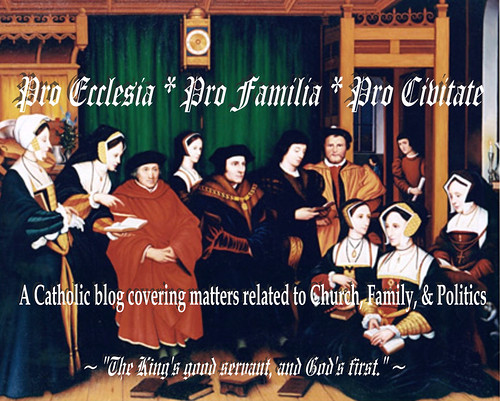Bishop Blair Teaches: "And With Your Spirit"
From the August edition of the Diocese of Toledo's Catholic Chronicle:
Perhaps you have read or heard about a major project now underway to make a new English translation of the prayers of the Mass. While some people welcome this development, others ask why it is necessary.My Comments:
In order to approach this question, let’s start off by reminding ourselves that we are “Latin Rite” members of the Catholic Church. This means, among other things, that we in the West are the heirs of a great and ancient Latin liturgical tradition. (There are also Eastern Catholics who have their own ancient liturgies and languages; for example Chaldean Catholics from Iraq, Maronites from Lebanon, etc.).
In the early 1960s the Second Vatican Council called for the revision of the Mass and other sacraments, and authorized their celebration in the “vernacular” language of the people. The idea was not to write something completely new in modern languages. Rather, the challenge was to return to some of the earlier and simpler forms of the ancient Roman Rite, and to make revisions in Latin texts using ancient sources, while at the same time adding some new compositions too. The result was the new Latin Missal and other liturgical books issued under Pope Paul VI in the late 1960s and early 1970s.
The next step in liturgical renewal was to translate these new books from Latin into modern languages. The English translations we are using today were done rather quickly, and while they have served us well, there has been a growing recognition that what we have leaves something to be desired when it comes to accuracy and beauty.
Fidelity to what the Latin actually says is very important, because the doctrine and spirituality reflected in the Latin constitute a pillar of Catholic unity. The greatest sign of this unity throughout the world is the Mass, and it is important that Catholics of every language be united in what they are praying at Mass. There is an old Latin saying lex orandi, lex credendi, which means that what you pray is what you believe.
Let me give you an example of how a proposed new translation is meant to recapture accuracy not just for its own sake, but also for doctrinal and spiritual reasons. I am referring to the revised translation of “et cum spiritu tuo” as “and with your spirit” instead of the current “and also with you.”
As one of the U.S. bishops working on the new translations writes: “Our current translation might seem more personal and friendly, but that’s the problem. The spirit referred to in the Latin is the spirit of Christ who comes to a priest when he is ordained, as St. Paul explained to Timothy. In other words, the people are saying in their response that Christ as head of the Church is the head of the liturgical assembly, no matter who the particular priest celebrant may be. That is a statement of faith, a statement distorted by transforming it into an exchange of personal greetings.”
The language of public prayer also needs to be truly beautiful, noble, even poetic. So, for example, in the “Our Father” we use a good English word like “hallowed,” which is not part of our everyday speech, yet very appropriate for prayer. Many prayers, hymns, anthems and texts that are part of our religious and national heritage make use of language that is a cut above the way we ordinarily speak to one another. The goal of a new English translation of the Mass is not to sound like Shakespeare, but to use our language in a manner worthy of the Mass.
[More]
As I've said before, I did some research to make sure Norwalk was in Bishop Blair's diocese before finally deciding to move our family here.
UPDATE
Compare the piece by Bishop Blair above to the sort of crap that appears in (USCCB President) Bishop Skylstad's diocesan newspaper, which Dale Price nicely fisks here.



0 Comments:
Post a Comment
<< Home